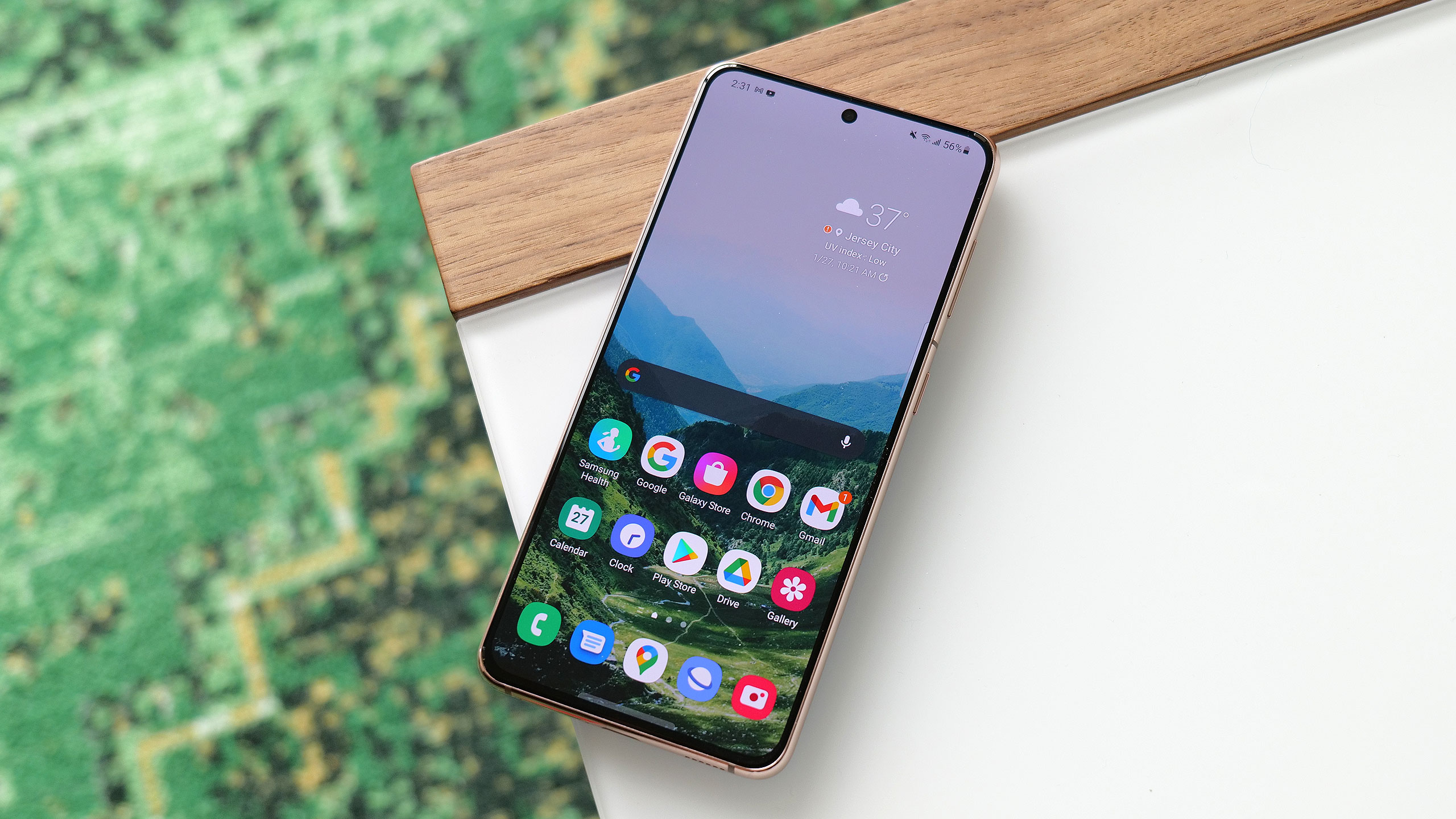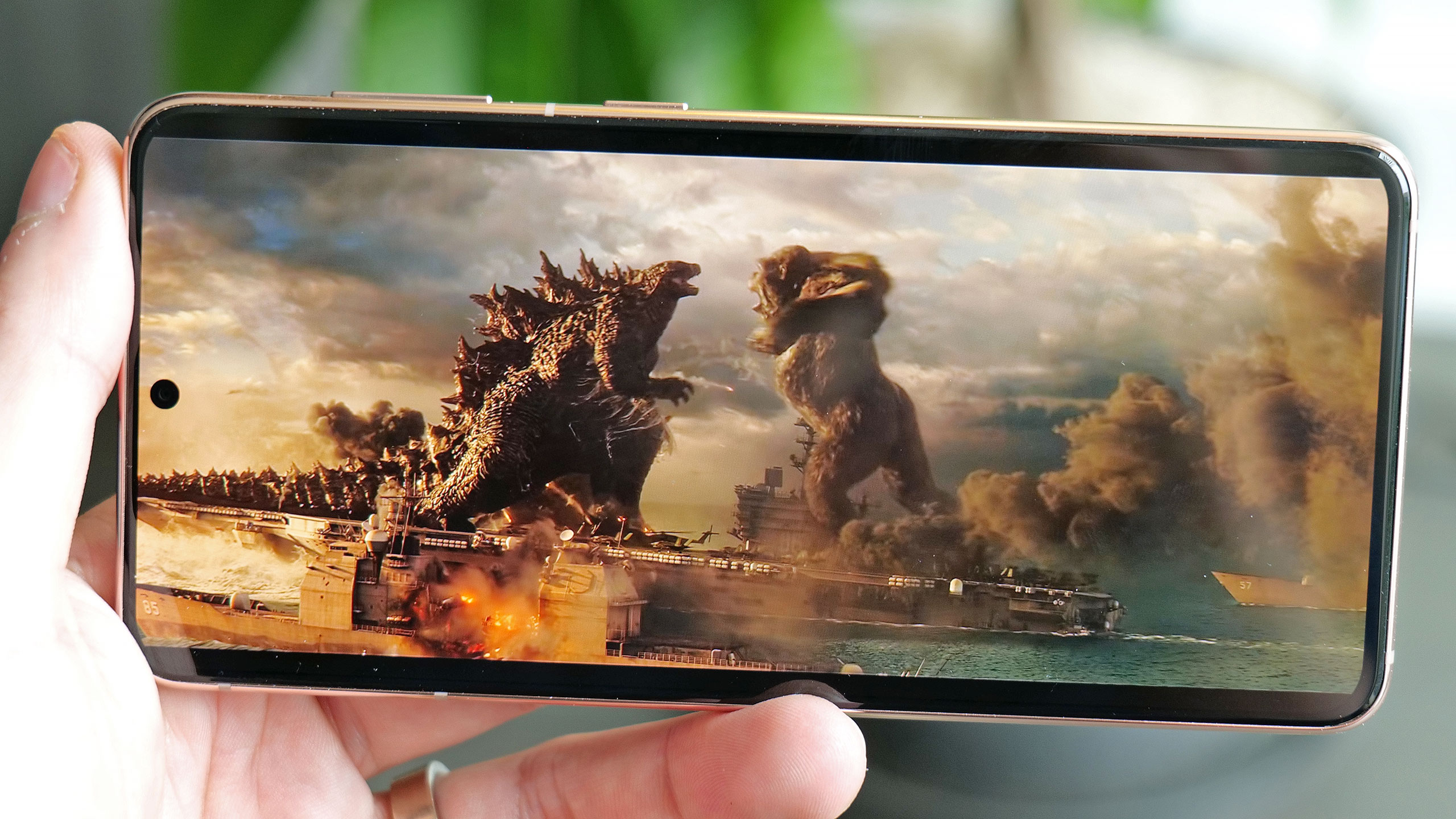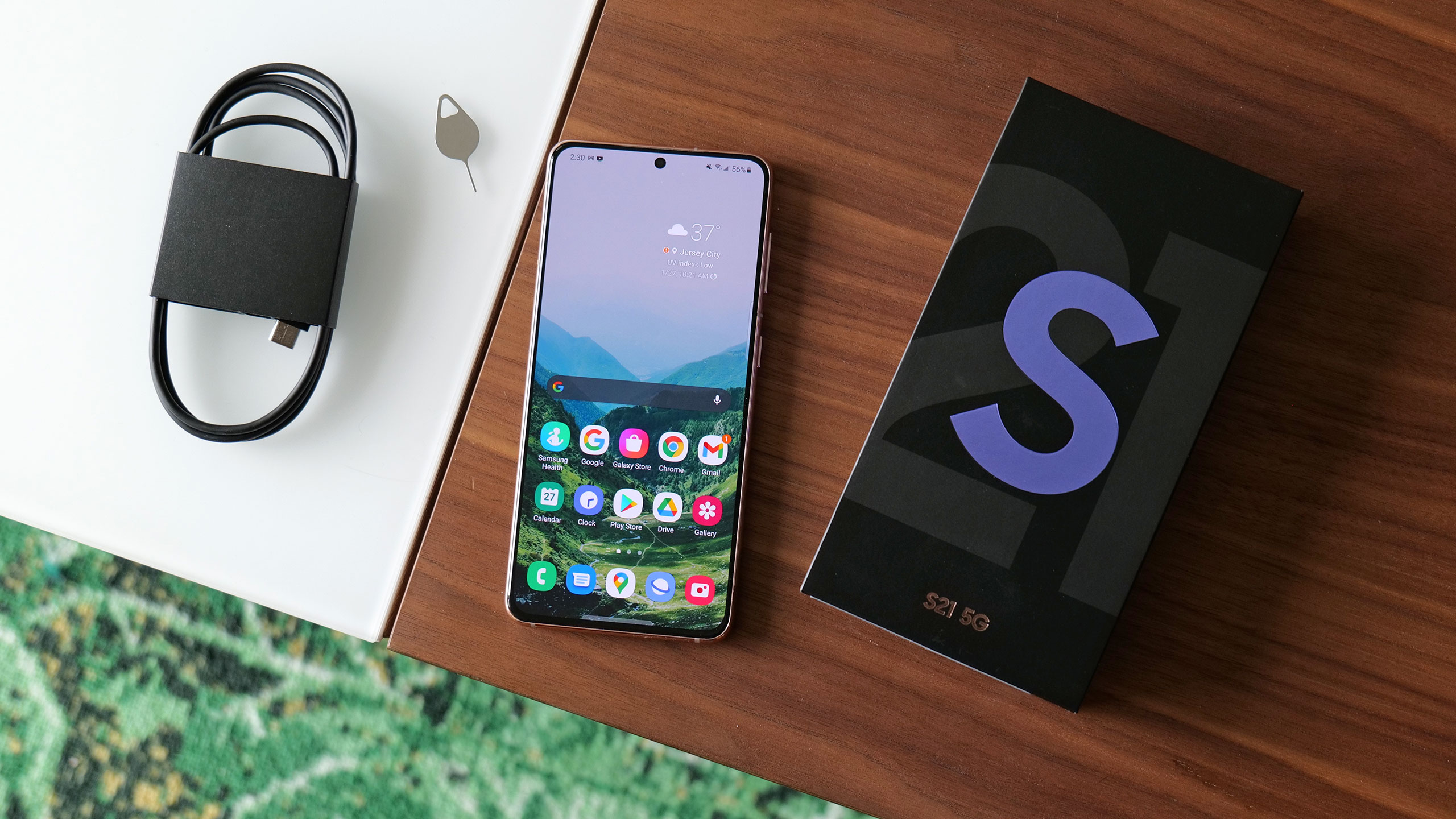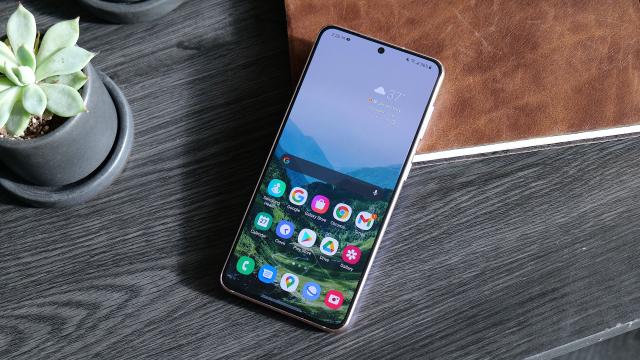By launching its newest flagship earlier in the year than ever before, Samsung is making a statement with the Galaxy S21. I mean, just look at the rest of the premium Android phone market: LG is currently mulling the possibility of selling off its mobile division, OnePlus is joining forces with Oppo to help level up its handsets, and last year, Google skipped making a high-end phone entirely, and instead opted to straddle the line between mid-range and premium with the Pixel 5. And that’s before you mention other previously big-time phone makers like HTC that are now basically on life support.
The Galaxy S21 features a fresh new design, a beautiful upgraded display with a variable 120Hz refresh rate, a vastly improved fingerprint sensor, and a lower starting price of just $1,249. Even though Samsung has dropped a couple beloved features, the Galaxy S21 feels like even more of a no-brainer for anyone looking to buy a premium Android phone.

Samsung Galaxy S21
What is it?
Samsung's flagship phone for 2021
Price
Starts at $1,249 for the S21, $1,549 for the S21+
Like
More durable, lightweight design, improved image processing, tons of premium features, IP68 water resistance, upgraded in-screen fingerprint sensor, variable 120Hz refresh rate, full 5G connectivity
Don't Like
Samsung killed the microSD slot, no headphone jack, power brick doesn't come included, battery life could be a bit better
Love it or hate it, the S21’s redesigned chassis is certainly unique, and it comes with a few notable advantages when it comes to durability. With its new Contour Cut camera module, Samsung was able to combine the S21’s camera housing with the rest of the phone’s metal chassis, which should offer increased durability and help avoid the cracked glass that some people experienced with the Galaxy S20. And in a departure from so many premium phones, instead of using Gorilla Glass 7 in front and back (like you get on the S21 Ultra), the standard S21’s back is made from plastic. So if you drop it, you might get left with a dent, but the body shouldn’t spider-web into a million spiky shards.
With its 6.2-inch display, new matte back, and the added lightness you get from plastic, I feel like the S21 offers the perfect combination between size and usability. Even for someone with medium-sized hands, the S21 never feels cumbersome or unwieldy, and unless you’re a big mobile video watcher, there’s plenty of room to watch content. If you love big-screen phones, you can always upgrade to the S21+, which features a 6.7-inch display, though I haven’t had a chance to check out the larger model out in person yet.
The biggest upgrade on the S21, though, is Samsung’s new VRR display, which can now dynamically adjust its refresh rate between 120Hz (for stuff like gaming) or lower its refresh rate to as low as 40Hz (for when you’re looking at photos). This is a huge upgrade from the S20, which was locked at 120Hz, and it allows the S21 to deliver the best, most fluid looking visuals when you need them or drop its refresh rate down when you don’t to help save on battery life. The result is that even if you’re just scrolling through social media, text flows up and down like a river. It’s like a massage for your eyeballs. And with excellent brightness that hit 850 nits on our tests, along with rich, saturated colours, the S21’s display is unmatched among phones (aside from the S21 Ultra’s display, which has an even more sophisticated version of Samsung’s 120Hz tech).

However, as good as the S21’s screen is, it does come with a trade-off — the resolution has actually decreased from last year, down to 2400 x 1080. Under most circumstances you can’t tell, but if you really go pixel peeping or have excellent eyesight, you may notice a tiny bit less sharpness than before. But as much as I wish Samsung didn’t compromise, I do have to admit that given the choice between slightly higher resolution or the S21’s new screen, I’m going to take that all 120Hz of VRR goodness.
Beneath the glass, the S21’s in-screen fingerprint reader has also gotten a big upgrade with a new sensor. It might not look much bigger from the size of the icon, but it’s actually 1.7 times larger than before. The speed of the sensor feels noticeably faster, which is enough to turn a feature that many still think is somewhat underwhelming into a bonafide highlight. Honestly, if all in-screen fingerprint sensors were this good, no one would want to go back to the old rear-mounted digit scanners.

Samsung even refined tiny details: removing the controversial rounded edges used on previous Galaxy phones and thinning down the S21’s bezels but still keeping enough room for the tiny sliver that is the S21’s earpiece, which is nestled just above its 10-MP selfie cam.
With the S21’s rear camera, which features the same sensors as before (12-MP main, 12-MP ultra-wide, and 64-MP telephoto with a 3x optical zoom), Samsung has borrowed Google’s strategy of sticking with the same components but improving the S21’s algorithms and camera processing. In the real world, this means the S21 offers more accurate white balance and a more powerful night mode, with Samsung even tacking on a bunch of new and revamped camera features. So in addition to a brand new Portrait Mode with tools like studio lighting (which is replacing Samsung’s tired old Live Focus mode), there’s also a new Director’s View to help you film vlog-style videos (with controls for recording from both front and rear cams), and even a revamped Single Take mode that can film slow-mo clips while snapping up to 10 different pics in one second.
But the real takeaway I had after testing the S21 head-to-head against the Pixel 5 is that Samsung has essentially caught up with Google’s image processing, while also providing a wider range of lenses and adjustable features. In a photo of some sushi, you can see the advantages of Samsung’s scene optimiser, which captured warmer and frankly more appetizing colours, without losing much, if any detail. Same goes for a shot I took of graffiti, where the S21 more accurately corrected the cool tones of a shot taken on a cloudy overcast day, resulting in a brighter and more colourful photo. And even at night where the Google’s low light Night Sight mode traditionally holds a significant advantage, the S21’s pic was slightly grainer, but it’s arguably sharper and produced a final pic that doesn’t disappoint.
Under the hood, as has become tradition for new Galaxy phones, Galaxy S21 models in the U.S. are the first handsets to feature Qualcomm’s new Snapdragon 888 processor. When combined with a base 8GB of RAM and 128GB of storage, the S21’s performance has hit a point where practically any kind of everyday task or app (even multiple apps) doesn’t pose much of a workout. That said, I do have to at least mention that on synthetic tests like Geekbench 5, Apple’s A14 chip still comes out on top, with the iPhone 12 posting multicore scores of 4,103 to the S21’s mark of 3,528. Thankfully, in lieu of raw performance, the S21 can use its new chip for other resource intensive tasks like 8K video recording, which is a welcome though somewhat niche upgrade.
At this point, everything about the S21 sounds like a real treat thus far, but there are two other places where Samsung has backpedaled a bit. The first is the S21’s battery life, which at 12 hours and 36 minutes on our battery test is barely above average. In more typical everyday use, I found the S21’s endurance was still more than enough to last a whole day and then some. However, with the added energy efficiency provided by Qualcomm’s new silicon, I was hoping for more.
The other step back is one that might feel like a dealbreaker for longtime Galaxy fans. This year, Samsung has finally decided to axe microSD card expandability across the entire S21 lineup. This means no more adding on storage post purchase, or easily carrying over your huge music collection or photo roll via microSD from your previous Galaxy phone. The storage you have when you buy the phone is all you’ll ever get. The one small upside to this change, though, is that if you do want to upgrade to 256GB of storage, it only costs an extra $70, compared to an iPhone 12, which still comes with just 64GB of base storage and costs about $200 to upgrade to 256GB.

Finally, in a move that mirrors Apple’s decision to no longer include power adapters with the iPhone 12, Samsung is no longer bundling charging bricks too. It’s an annoying move, but like headphones jacks and microSD slots, bundled power adapters are becoming extinct, and it seems like there’s nothing we can do about it.
Even with two small blips (or three depending on how you’re counting), the S21 is a beacon. It’s got possibly the most well-rounded set of features available on any phone available today, including a fancy new screen, revamped design, and support for 5G connectivity, Wi-Fi 6E, Bluetooth 5.2, and more. But what puts the S21 over the top is that it starts at just $1,249 — $150 less than what the S20 launched at last year and the same as an iPhone 12.
That’s a really big deal, because right now (and for the foreseeable future), the S21’s only real rival lies on the other side of the OS divide. Google, LG, and others don’t have anything that can really compete. That means for Android users looking for a truly high-end device, the Galaxy S21 is your default choice, and it’s damn hard to think of anything else I’d rather have for the money.

README
- By adding a 120Hz VRR display, improved image processing, and a vastly upgraded fingerprint sensor, Samsung has cemented the Galaxy S21 as the high-end Android phone to beat.
- Unlike the S21 Ultra, the standard S21 has Gorilla Glass 7 in front and polycarbonate (aka plastic) in back, though it does feel pretty good and makes the phone weigh less.
- At around 12 and a half hours in our testing, the S21’s battery life is above average, but not by much.
- Other notable premium features on the S21 include Bluetooth 5.2, Wi-Fi 6E, IP 68 water resistance, 25-watt fast charging (power brick not included), and both wireless and reverse wireless charging.
- Two features that have taken a step backwards from last year’s Galaxy S flagship are a lower-res FHD+ display (compared to QHD+ for the S20), and the removal of microSD card expandability.
- Aside from differences in screen and battery size, the one feature the S21+ gets that the standard S21 doesn’t get is support for UWB.
